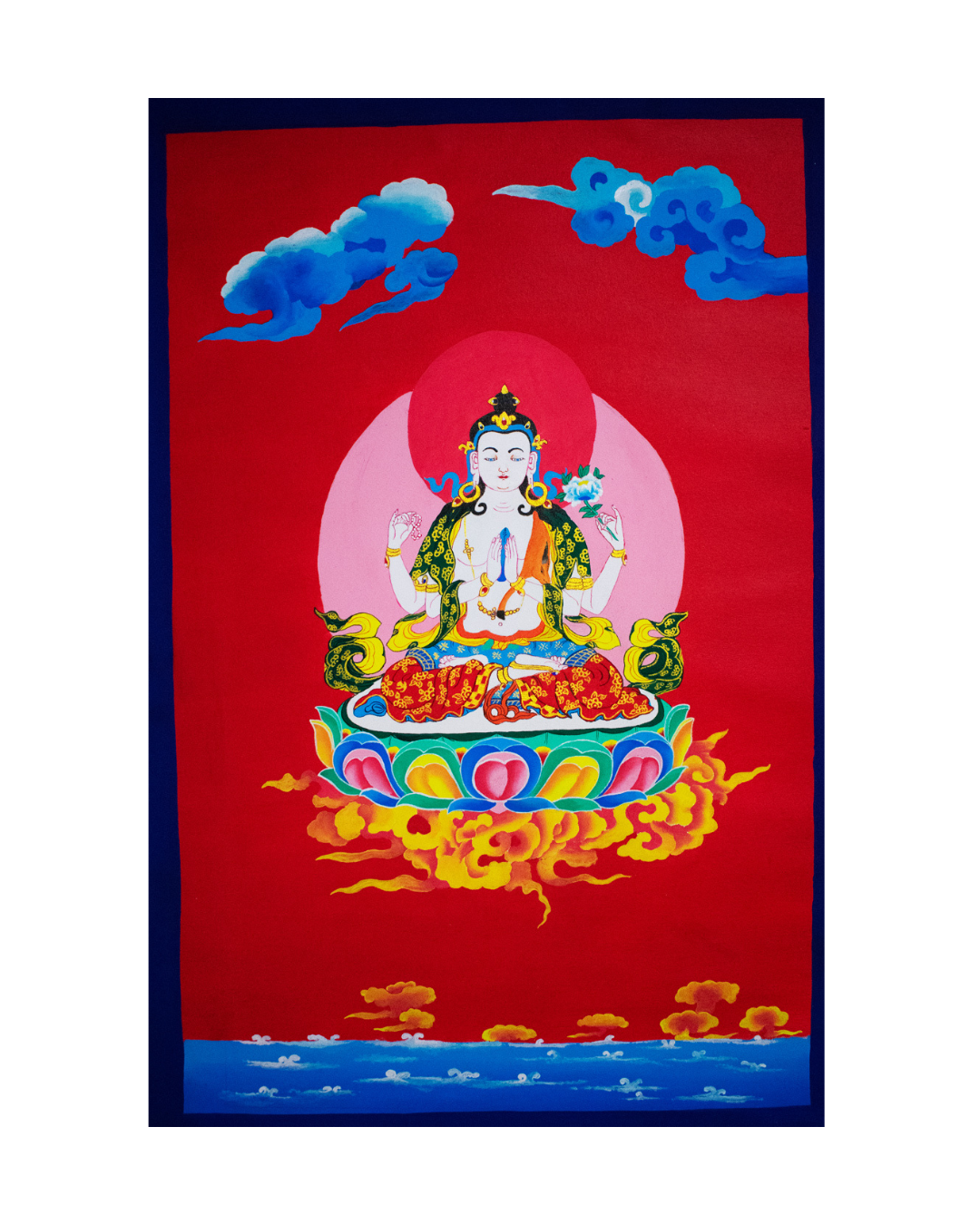Darjeeling Connection
Buddha of Compassion, Avalokiteshvara (Sanskrit), Chenrezig (Tibetan) Thangka
Buddha of Compassion, Avalokiteshvara (Sanskrit), Chenrezig (Tibetan) Thangka
Couldn't load pickup availability
Avalokiteshvara, known as Chenrezig in Tibetan Buddhism, is one of the most beloved and widely revered bodhisattvas in Buddhism. A bodhisattva is an enlightened being who has chosen to remain in the cycle of birth and death (samsara) to help all sentient beings attain liberation from suffering.
Avalokiteshvara/Chenrezig is believed to embody the compassion of all Buddhas. He is always painted in white to represent how free he is of all the veils of Samsara. His four arms symbolize the 4 virtues: love, compassion, joy, and equanimity. These four virtues are the base of bodhichitta, the Buddhist practice of compassion. His two legs are in padmasana or the lotus position. This represents the key to becoming a Bodhisattva, the union of compassion and emptiness.
The Dalai Lama is thought to be the living embodiment of the Buddha of Compassion, re-incarnated here on earth in order to help spread the teachings of the Buddha.
Those who seek deep compassion and happiness should meditate on this thangka or hang it in his/her room.
Limited Availability: Due to the meticulous craftsmanship involved in creating each thangka, we have limited stock available. Don't miss the opportunity to own this exceptional work of art and spirituality
The Thangka will typically include the following elements:
- Compassion and Mercy: Avalokiteshvara is the embodiment of compassion and mercy. The name "Avalokiteshvara" means "the one who hears the cries of the world." This bodhisattva is believed to listen to the suffering and pleas of all sentient beings and respond with boundless compassion.
- Four-Armed Form: In many thangkas, Avalokiteshvara is depicted with four arms. Each hand holds a symbolic item: a lotus flower, a crystal mala (prayer beads), a jewel, and a lotus bud. These represent purity, prayer, compassion, and the granting of wishes, respectively.
- White Color: Avalokiteshvara is often depicted as white, symbolizing purity and the radiant light of compassion. However, Chenrezig can also manifest in various forms and colors, including a red form, symbolizing compassion in action.
- Bodhisattva Crown: Avalokiteshvara is typically depicted wearing a crown adorned with jewels, reflecting the bodhisattva's enlightened nature and status.
- Mantras and Symbols: Thangkas featuring Avalokiteshvara often include the mantra "Om Mani Padme Hum," which is associated with Chenrezig and is one of the most widely recited mantras in Buddhism. The mantra is believed to invoke the blessings and compassion of Avalokiteshvara.
- Lotus Seat: Avalokiteshvara is often seated on a lotus throne, symbolizing purity and enlightenment. The lotus rises above the muddy waters, representing transcendence over the worldly suffering.
- Bodhisattva of the Great Compassion: Avalokiteshvara is often referred to as the "Bodhisattva of the Great Compassion" due to the central role compassion plays in the bodhisattva's teachings and practices.
The imagery of Chenrezig serves as a powerful reminder of the path of compassion and the bodhisattva's commitment to helping all beings attain liberation from suffering. The iconic depictions of Avalokiteshvara in thangkas are designed to inspire practitioners to cultivate the qualities of compassion and loving-kindness in their own spiritual journey.
.
Care Instructions
Care Instructions
Materials
Materials
Specially treated cotton canvas; Paints are a mixture of acrylic, gold dust, and stone pigments
Dimensions
Dimensions
22.5 x 15 inch (l x b)
Country of Origin
Country of Origin
India


